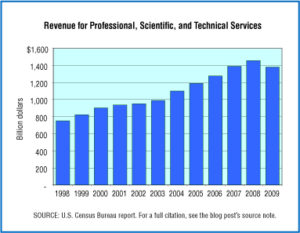For many finding a spouse or someone to have a long-term relationship with is difficult. From the 1940s through the 2000s a large percentage of people met their significant other through friends. In addition, many couples met in bars and restaurants, at college, church, and their workplaces. When meeting people through these avenues failed, some people decided to expand their social network in nontraditional ways. Over the years this has included placing personal ads in newspapers, signing up for computer dating, and using online dating services.
What was likely the first personal ad appeared in 1695 in the Collection for the Improvement of Husbandry and Trade, a periodical published in London, England. A 30-year old gentleman wanted to “willingly match himself to some Good Young Gentlewoman that has a fortune of £3,000 or thereabouts.” Over the centuries, personal ads became commonplace in newspapers, including for most of the 20th century, however; few marriages resulted. In the United States, only about 1% of relationships that led to marriage began with couples meeting via these ads.
Before the Internet, in the 1960s and 1970s, several companies offered computer dating services. Applicants would fill out questionnaires and mail them to the company, then their responses would be compared to responses from other applicants via a computer. A person would need to wait days or weeks for a packet of information to arrive in the mail if the computer found one or more matches.
In the 1990s, personal computers and access to the World Wide Web became more prevalent and graphical browsers became more popular. In 1995, match.com became the first company to offer an online service similar to newspaper personal ads and computer dating services. For a fee users would be allowed to post profiles online—a picture, biographical information, and answers to a questionnaire—and then be able to browse the profiles of other users and contact those with whom they were interested in dating. Match.com’s initial target audiences were the gay and lesbian community and technology professionals. Women, in particular, were also encouraged to sign up with the belief that if there were a large pool of women to choose from, men would then be willing to sign up for the service also. In 2004, Guinness World Records recognized Match.com as the largest online dating site, with 15 million active members worldwide at the time and 42 million members registering with the service since its debut in 1995. Since the late 1990s, thousands of other companies have offered their own online dating services, both for the general public and catering to specific groups based on political views, religious beliefs, hobbies, lifestyle or profession. In 2010, more than 20% of opposite-sex couples met online. The internet overtook churches, neighborhoods, classrooms, and offices as a more popular place for couples to meet. That same year, nearly 70% of same-sex couples met online.
As usage of personal computers and laptops gave way to mobile devices and smartphones, online dating apps flourished. In 2013, Tinder became the first online dating app that introduced a simple interface for accepting or rejecting a potential partner: swipe right for “yes” and swipe left for “no”. If two people swiped right, they were given each other’s contact information. Location-based services became part of some apps. Users could be matched with others who frequent the same public places, such as restaurants, bars, or concert venues. While some of these online services and apps have a reputation for facilitating hookups rather than long-term, meaningful relationships, 84% of users surveyed said they use these sites to find romantic relationships. Only 24% reported looking for hookups. In 2018 in the United States, nearly one in six relationships that led to marriage started through an online dating service or app. More than half of adults aged 18-34 know someone who uses online dating and a third know someone who entered into a long-term relationship as a result. College graduates and those earning more than $75,000 per year are most likely to know someone who uses online dating and who has entered a long-term relationship after meeting someone online.
More than 260 million people worldwide and tens of millions of people in the United States have tried online dating, and yet there is still a stigma attached. A Pew Research Center survey in 2015 found that 23% of people thought that those who use online dating services are desperate. However, this is down from 29% in 2006.
Today’s market size shows the total revenues of online dating services worldwide. Revenues for Match Group, which owns Tinder, match.com, and 40 other similar businesses totaled $1.3 billion in 2017, more than a quarter of the global revenue for the entire industry.
Geographic reference: World
Year: 2018
Market size: $4.6 billion
Sources: “Putting the Data into Dating,” The Economist, August 18, 2018, pages 19-21; “History of the Web Browser,” Wikipedia, December 18, 2018 available online here; “Match.com,” Wikipedia, December 16, 2018 available online here; Louise Matsakis, “Tinder’s Days as a Hookup App May Be Over,” Wired, April 23, 2018 available online here; “Timeline of Online Dating Services,” Wikipedia, September 4, 2018 available online here; John Hendel, “Old, Weird Tech: Computer Dating of the 1960s,” The Atlantic, February 14, 2011 available online here; Aaron Smith and Monica Anderson, “5 Facts About Online Dating,” FactTank: News In the Numbers, Pew Research Center, February 29, 2016 available online here; “Online Dating,” Statista available online here; Aaron Smith, “15% of American Adults Have Used Online Dating Sites or Mobile Dating Apps,” Pew Research Center, February 11, 2016 available online here; Hayley Matthews, “27 Online Dating Statistics & What They Mean for the Future of Dating,” DatingNews.com, June 15, 2018 available online here.
Image source: Athree23, “heart-love-keyboard-enter-button-3698156,” Pixabay, October 2018, available online here.




